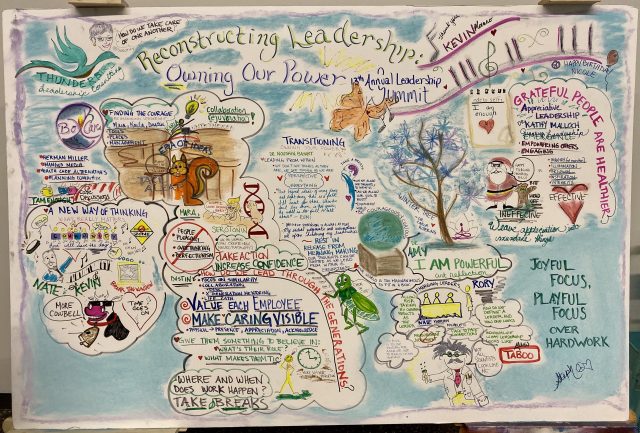To Develop Good Judgment…
Did you make any decisions for the new year? In our last blog Rory offered a reflective approach using four questions as a guide to help readers act to create a meaningful 2020. In thinking about decisions to act, I came across an interesting article about good judgment [1] by Sir Andrew Likierman. [2] The author and others contend that even though we may think we have all the information in the world, if we do not have ‘good judgment’, our decisions can be doomed.
Likierman offers this definition of judgment: the ability to combine personal qualities with relevant knowledge and experience to form options and make decisions. Judgment is at the “core of exemplary leadership” according to Noel Tichy and Warren Bennis in their book Judgment: How Winning Leaders Make Great Calls [3]. They believe that judgment calls are the single marker of leadership.
To me, making a judgment as a process is clear, but the qualitative aspect of good judgment seems muddier, especially since the outcome of that judgment can often be seen as good or bad, depending on the viewer. I remember my father telling me that I obviously lacked good judgment when as a teenager I did something he didn’t like. . . I missed my curfew because I had to find someone other than the boy I came with to the party (now inebriated) to drive me home. I thought my judgment was pretty good. He disagreed.
Likierman’s article, based on interviews with CEOs and leaders from a broad range of companies, lays out six fundamental leadership practices that are at the heart of good judgment: learning, trust, experience, detachment, options and delivery. He concludes each practice with suggestions for how to improve it.
As you review these practices and recommendations, I invite you use them as an assessment. How do they apply to you, to your organization or community group, perhaps your colleagues?
- Is there a recent decision that did not turn out as you expected, in spite of your being as thoughtful and prepared as possible?
- Are you struggling with how to create a culture where diverse opinions are truly sought and welcome?
- Does your organization suffer from a perspective for quick action rather than good judgment?
- Could your hiring process benefit from a makeover?
If you answered yes to any of these questions, we’d love to hear from you. Contact us at 602-538-2548 or 602-615-1192. We have the skills and experience to assist you on your journey.
- Learning: Listen attentively, read critically
Good listening is at the core of every book and article I’ve ever read about leadership. I’m sure you too can state all the reasons why attentive listening is so important. Likierman makes the point that the listener is really mining for information. Smart leaders, he says, demand quality, press for it even, in the information they receive. Volume isn’t important, in fact it’s distracting in our era of information overload. Is it well-reasoned and clearly explained, are conclusions obvious? He also points out our human tendency to take the written word at face value, rather than consider it with a healthy dose of skepticism.
How to improve listening and reading:
- Ask deep and thoughtful uncovering questions and consider body language to bring forth what isn’t said.
- Look for gaps and discrepancies in what we’re learning.
- Be aware of our own filters and assumptions. . . do we rely on one point of view, one news or business news source only? Do we know what makes us defensive and likely to reject something uncomfortable?
- Trust: Seek different perspectives, not validation
Examples abound of executives and leaders who insulate themselves by choosing to be surrounded by like-minded people. It is not uncommon for those companies to experience large scale failures, if they are big enough, and failure to thrive if they are small. Though it is comfortable to be with people who share the same world view, that need for comfort should be saved for after hours. It is only in integrating a variety of perspectives that we will have access to all the information needed for good judgment.
How to enhance a culture for broader points of view:
- Cultivate sources of trusted advice.
- Find people who will tell you what you need to know, not what you want to hear.
- Seek out different points of view. Ask for them, don’t wait for someone to timidly come forth because they see things differently than you.
- Learn to evaluate the process of someone’s judgment. Try to discover how someone arrives at a decision and action as well as a project’s outcomes.
- Experience: Make it relevant but not narrow
There is much to be said for hiring someone who has a lot of experience in your industry, but make sure there is breadth to it as well as depth. Someone who has years of experience in a fairly narrow niche, for example, out-patient surgery, may find themselves making “easy” judgments out of habit, or overconfidence or familiarity.
How to improve the experience factor:
- Evaluate your own past experiences honestly in making good and bad judgments. Review those situations to see what else you can learn.
- Recruit a smart friend who can look over your shoulder and be a neutral critic.
- Work to expand the breadth of your own experience.
- Detachment: Identify, then challenge assumptions
The skill of detachment is a difficult one to master because it requires us to set our egos aside and remove any personal connection to a particular outcome. Acting with detachment is easier if we are able to understand and address our own preconceptions.
Some ways to improve detachment:
- Understand, clarify and accept points of view different from your own.
- Try out role plays and simulations, letting people take on different perspectives to see what they learn.
- Support leadership development programs; they broaden exposure to leaders with different thinking, experiences and points of view.
- Assume that mistakes will occur. Plan for them.
- Options: Question the solution set offered
The author makes the point that even though you might be offered two options to choose from, often as not there are more options that haven’t even been considered. There are always more. Not taking action is an option as well as delaying a decision. It is important to explore as many options as possible and try to surface the unintended consequences of each.
Improve your options:
- Press for clarity on poorly presented information, challenge it if information is missing.
- Be aware of two risks associated with novel solutions – stress and overconfidence – and mitigate them if possible through piloting one or two before full implementation.
- Understand that people often have personal stakes in an outcome. Try to figure that out and factor in others’ perspectives.
- Be aware of the rules and the ethics that will bound a good judgment.
- Delivery: Factor in the feasibility of execution
You can make all the right choices but lose out if you don’t exercise judgment in how and by whom those decisions will be carried out. What are the risks of half-hearted or poorly thought out implementation plans? Likierman points out that people with flair, charisma, creativity and imagination may not be in the best position to deliver the results you seek.
Ways to improve on the good options:
- Make sure the people you choose to implement have the type of experience that closely matches up with its context.
- Seek out ideas from your team about what might cause a proposal to fail.
- Do not let yourself be pressured by an arbitrary timeline if you don’t have the right implementers.
There is a lot to be learned about the science and art of leadership. If, as Tichy and Bennis claim, judgment calls are truly the single mark of a leader, looking for ways to turn our OK judgments into good ones is well worth the effort. If you made some new decisions for 2020, reviewing and following the points above could strengthen your results. . . Good luck! And give us a call if you’d like to discuss your situation and how we can assist.
PLEASE NOTE: We are making some improvements to our website in February. Look for the return of our blog in March.
[1]https://hbr.org/2020/01/the-elements-of-good-judgment (accessed 1/14/20)
[2]Sir Andrew Likierman is a professor at London Business School and a director of Times Newspapers and the Beazley Group, both also in London. He has served as dean at LBS and is a former director of the Bank of England.
[3]Tichy, Noel and Bennis, Warren. 2007. Judgment: How Winning Leaders Make Great Calls. Penguin Group.






